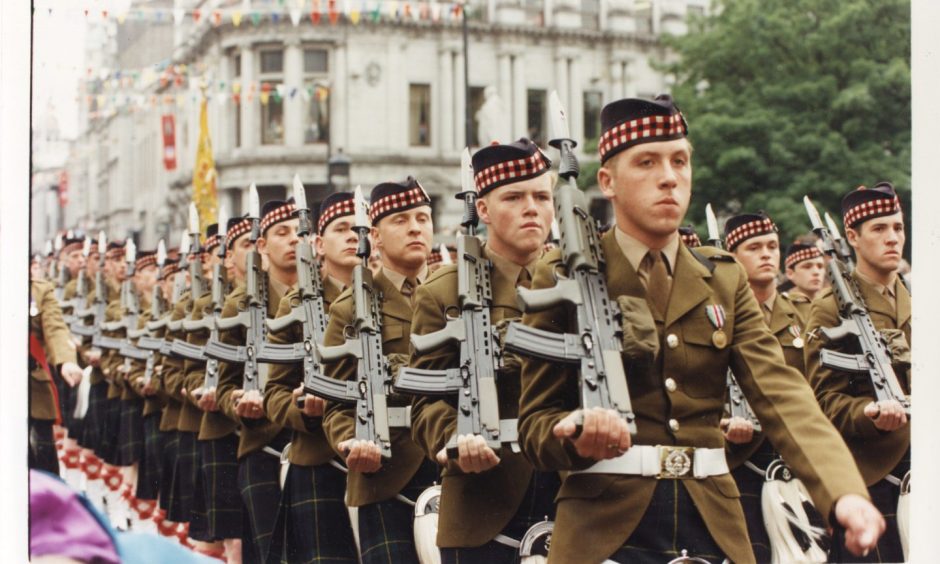
The amalgamation of the Gordon Highlanders with the Queen’s Own Highlanders in 1994 was an emotive occasion in Aberdeen and beyond.
For 200 years, generations of Gordon Highlanders upheld a distinguished and strong tradition, not only in the north-east, but across the world.
September 17 1994 marked 200 years since the regiment was raised, but it also marked the Gordon Highlanders’ demise.
The historic anniversary stirred emotions of pride and sadness – it was a day of fellowship for comrades past and present, but also farewell to two centuries of tradition.
And of course, the sentiments were shared by the Queen’s Own Highlanders (QOHLDRS), who were also saying goodbye to 33 years of history.
While QOHLDRS were founded more recently in 1961, their decades of service were no less distinguished.
Thirty years on, Aberdeen continues to be proud of its Gordon Highlanders, a regiment forever synonymous with the Granite City.
Gordon Highlanders were raised to fight in French Revolutionary Wars
The Gordon Highlanders regiment was raised by Alexander Gordon, the 4th Duke of Gordon in 1794, as the 100th Regiment of Foot.
Britain had just entered the French Revolutionary Wars and additional regiments were desperately needed.
Many of its soldiers were recruited from the ancient Clan Gordon castles and estates.
Gordon’s wife Jane donned military uniform and joined him in the recruiting campaign, supposedly offering a kiss to every recruit that signed up.
In 1798 the regiment was renumbered the 92nd (Gordon Highlanders) Regiment of Foot, to reflect its rise in precedence.
The Gordons saw a great deal of action during the conflicts, not only in France but across Europe, in Copenhagen and as far away as Egypt.
And they famously fought at the Battle of Waterloo.
The Gordon Highlanders suffered 29,000 casualties in WW1
The 19th Century also took the Gordon Highlanders to India, back to Egypt, Sudan and South Africa.
And the regiment’s incredible 320 mile march through Afghanistan, which they completed in just 23 days, has gone down in history.
The Gordons also saw action in the Boer Wars, but the scale of the First World War in 1914 was unlike anything experienced by the regiment.
In the conflict, the Gordon Highlanders’ ranks swelled to 50,000 men, between its regulars and those recruited from territorial and reserve battalions.
With nine Gordon Highlanders’ battalions on the Western Front for the duration of the war, the Gordons suffered 29,000 casualties – 9,000 of those died.
The losses were felt keenly in every corner of the north-east.
The Second World War brought more daring escapades with the Gordon Highlanders seeing action in Europe, North Africa and the Far East.
‘You’re nae a soldier if you’re nae a Gordon’
After an initial, dramatic evacuation from Dunkirk in June 1940 as part of the 51st Division, the Gordons went on to take part in vital campaigns.
An account of the Gordon Highlanders in the booklet ’51st Highland Division in North Africa & Sicily’ reads: “The Gordon Highlanders, men from Aberdeen and the North East, are tough, hard fighters who are never daunted by difficulties.”
An old saying went: “You’re nae a soldier if you’re nae a Gordon.”
Their exploits in El Alamein were described as reminiscent of the Gordons at Waterloo, except they were carried into battle atop tanks rather than horses.
It was the Gordons who pierced the German line at Misurata in Libya, leading the charge to Tripoli.
But as well as fighting fascism, the Gordons were considered humanitarians by the innocent victims of war.
The booklet explains how the Gordons’ first aid post established a clinic for the poor in Tripoli; while starving Italians ate from the troops’ mess tins.
On D-Day the 5th/7th Gordons of the 51st Highland Division, were among the first boots to land on the ground at Normandy, followed by the 1st and 2nd Gordons.
Gordon Highlanders’ deployments continued into the ’90s
Of course the world’s conflicts didn’t end in 1945.
Immediately after the war, the Gordon Highlanders were among the troops deployed in Palestine as part of efforts to quell friction between the Arabs and Jews.
After the war, the Gordon Highlanders took frequent tours of duty in Germany, particularly during the Cold War.
The regiment also saw postings in Cyprus during the 1950s as they tried to mediate between the fighting Greek and Turkish populations.
The Gordon Highlanders once again spent time in Africa on garrison duties, before being deployed to Northern Ireland from 1972 to 1990 during The Troubles.
Commanding respect from across the world, it was no surprise the north-east sprang to the defence of the Gordons when amalgamation of Scotland’s regiments was proposed in June 1991.
North-east came together to fight regiments’ amalgamation
In what was the biggest Army cuts since the end of the Korean War, defence secretary Tom King ordered a quarter of troops to be axed.
Instantly, a ‘Save the Gordon Highlanders’ campaign was established, vehemently backed by the Press and Journal and Evening Express.
The Gordon Highlanders had survived an earlier attempt to scrap the regiment in 1968, purely down to the public outcry and a petition bearing 1 million signatures.
North-east MPs Malcolm Bruce and Alick Buchanan-Smith immediately raised concerns given the Gordons’ heritage.
But a Whitehall source told the P&J: “No regiment is sacrosanct. They are all in one pot, every single one.”
The government left it to four generals to make the decisions and it was soon revealed the Gordon Highlanders would be merging with the QOHLDRS.
Some regiments merged as early as 1992, but the more controversial ones, including the Gordons, were delayed until 1994.
Whole streets and villages signed petitions to save Gordon Highlanders
Despite the decision having been made, a bitter and determined campaign continued.
The fight to save the regiment even won support in Corby, in the heart of England, where there was a large Scottish population. A petition of more than 1,500 signatures was returned to Aberdeen.
The Save the Gordon Highlanders campaign organised a march down Union Street in September 1991, followed by a rally at the Queen’s Links.
Support was gathered in whole streets and villages across the north-east.
The Evening Express even published coupons to send to petition Prime Minister John Major.
As pressure mounted, north-east politicians threw off party allegiances to unite in battle to save the Gordon Highlanders.
And by October 1991, a 225,000-signature petition was winging its way to the Downing Street, but the government said it would not be re-examining the issue.
‘I just had to see them for the last time’
Although the axe continued to dangle over the Gordons, the fight from Save the Gordon Highlanders led by chairman Mike Robson did not abate.
The recruitment of Scotland’s recently-retired top soldier, Lieutenant General Sir Peter Graham, as chairman of the Save the Gordon Highlanders campaign in 1993 was considered something of a coup.
Even as 1994 dawned, campaigners said they’d fight to the last.
Douglas Robson said in January 1994: “This is a momentous year in our history. It is the 200th anniversary of the founding of the Gordon Highlanders.”
The Gordons began their march into the history books with a series of parades across the regiment’s recruiting heartland.
On June 25 1994, the Gordon Highlanders’ final Trooping the Colour ceremony was held at Seaton Park in Aberdeen in front of a crowd of thousands.
Former soldiers from across the world came to witness the poignant occasion, with the Prince of Wales taking the salute.
One of those was Tom Neeman, 76, from Victoria in Australia, who said: “I just had to be here to see them for the last time. It was worth it.”
Symbolic ceremony above River Spey marked death of regiments
The Gordon Highlanders officially merged with the QOHLDRS at a ceremony on Telford Bridge, which spans the River Spey in Craigellachie, on September 14 1994.
The Spey was the historic recruiting boundary between the two regiments.
The men of the Gordon Highlanders marched from the old Banffshire side, while the men of Queen’s Own Highlanders descended from the Moray side.
They proudly carried their respective battle honours, with the skirl of their regimental marches – the Gordon’s Cock o’ the North and the QOHLDRS Caberfeidh – echoing above the swirling river.
Thousands of people watched as both commanding officers exchanged liberal quaichs of whisky.
It was a symbolic act that marked the deaths of two regiments, but the formation of one.
And they marched together into Craigellachie – and into the future as The Highlanders.
If you enjoyed this, you might like:
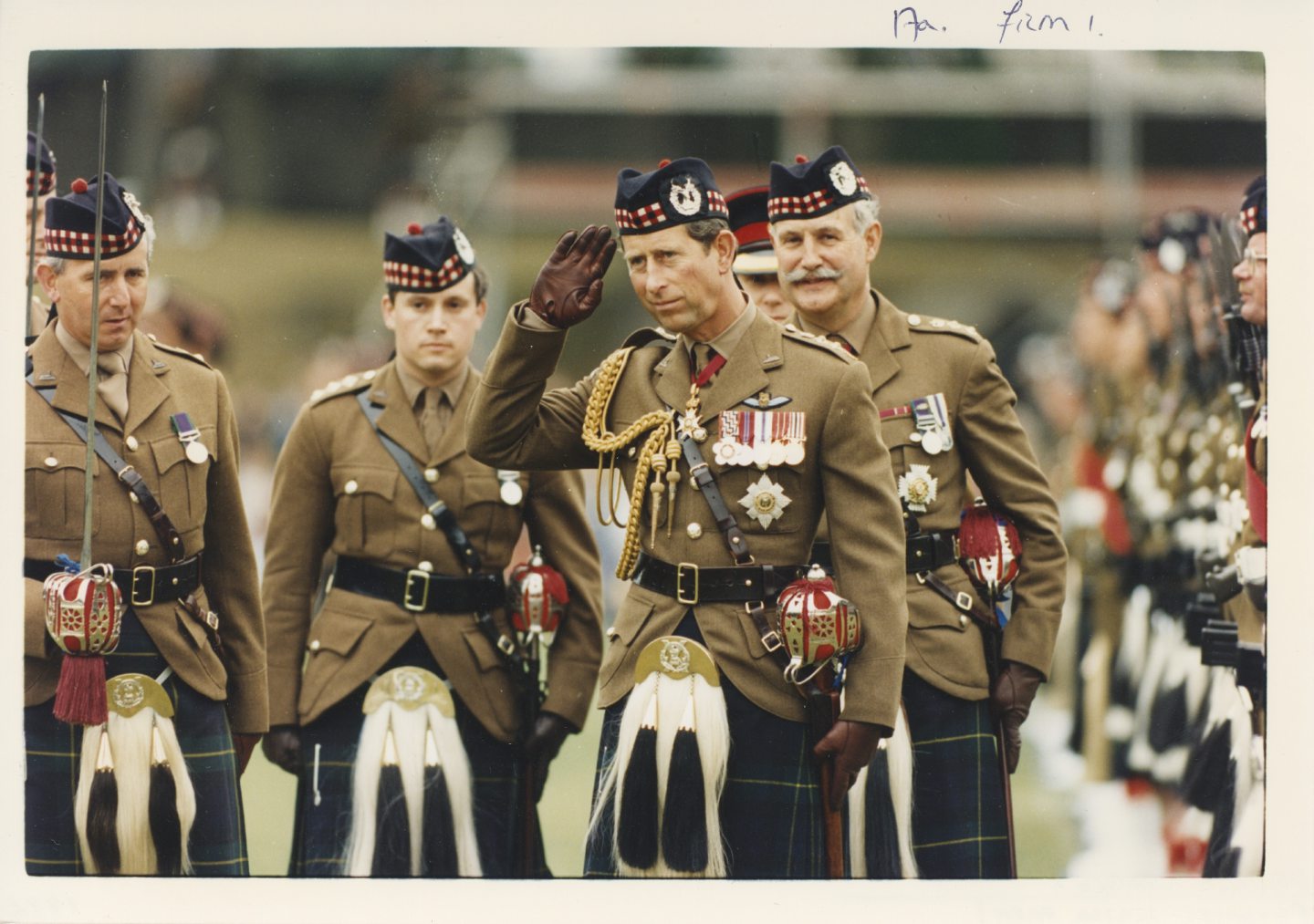
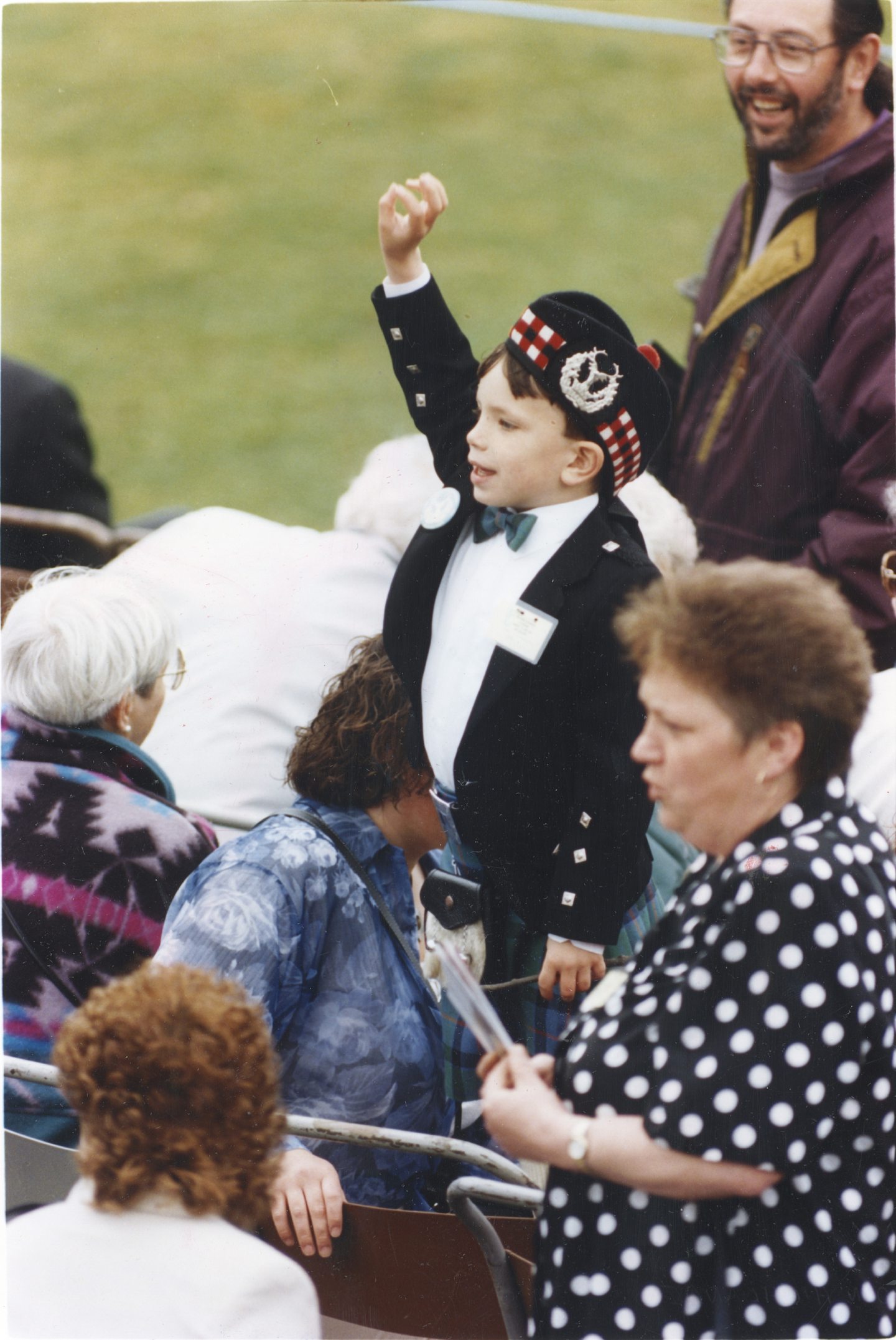
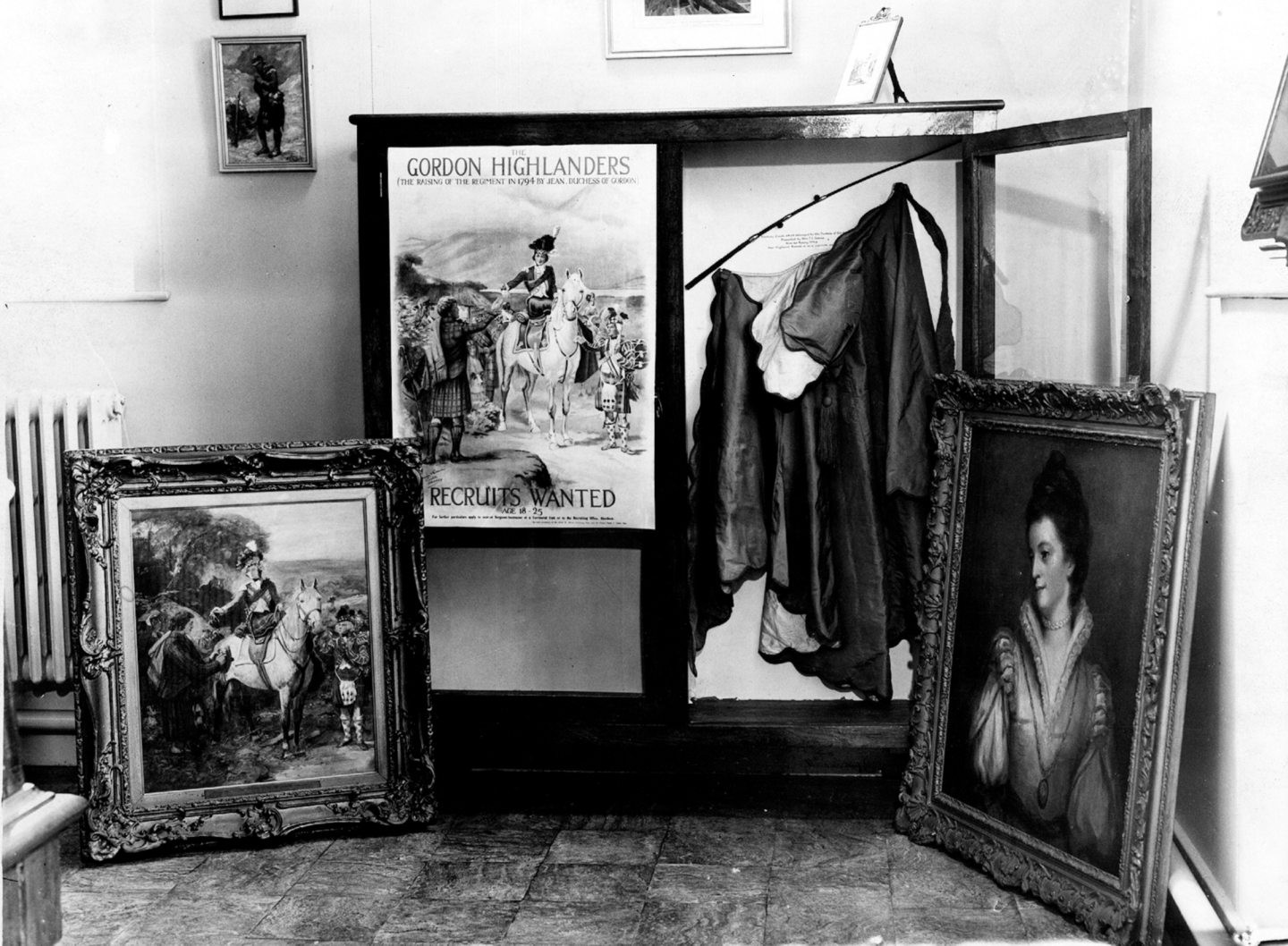
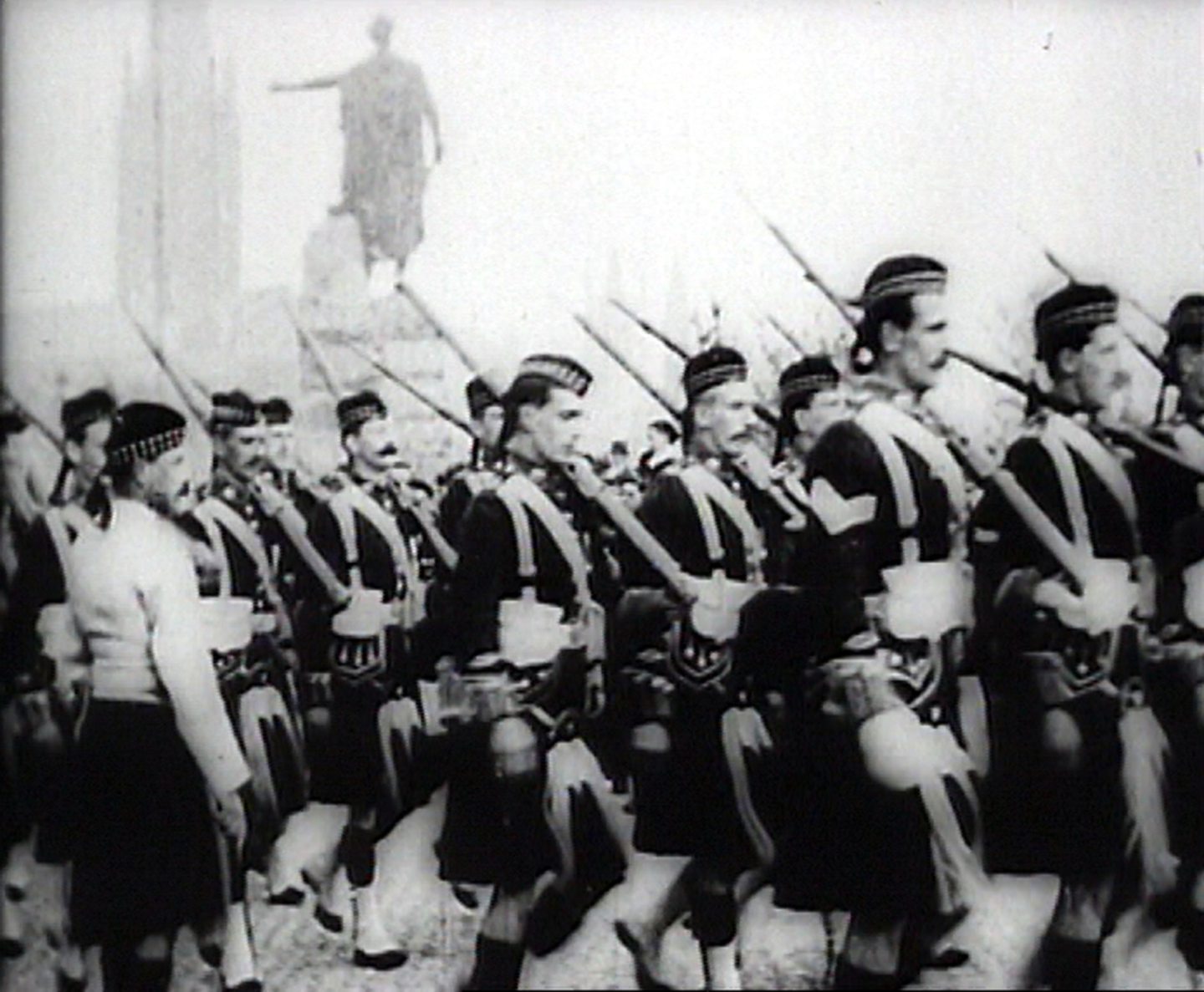
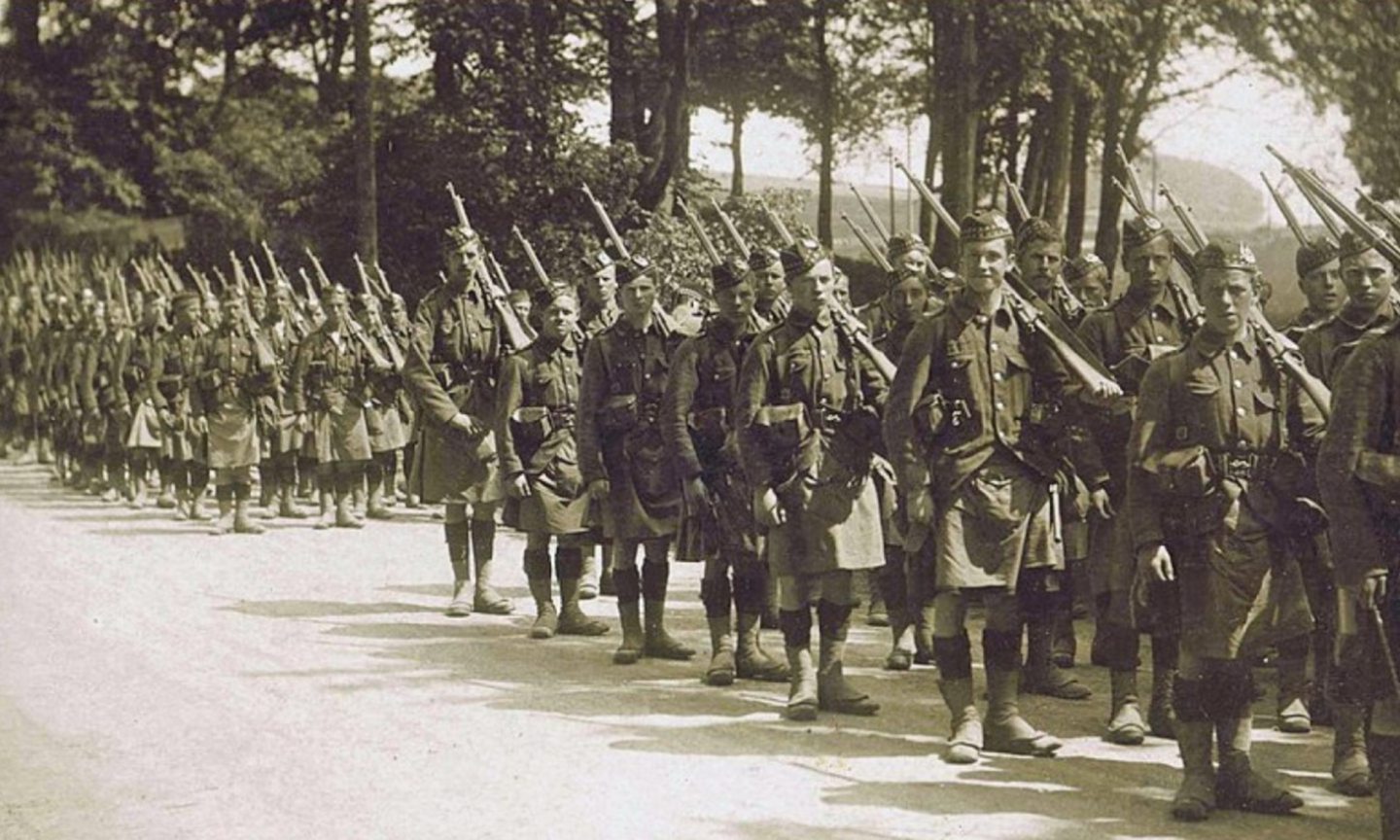
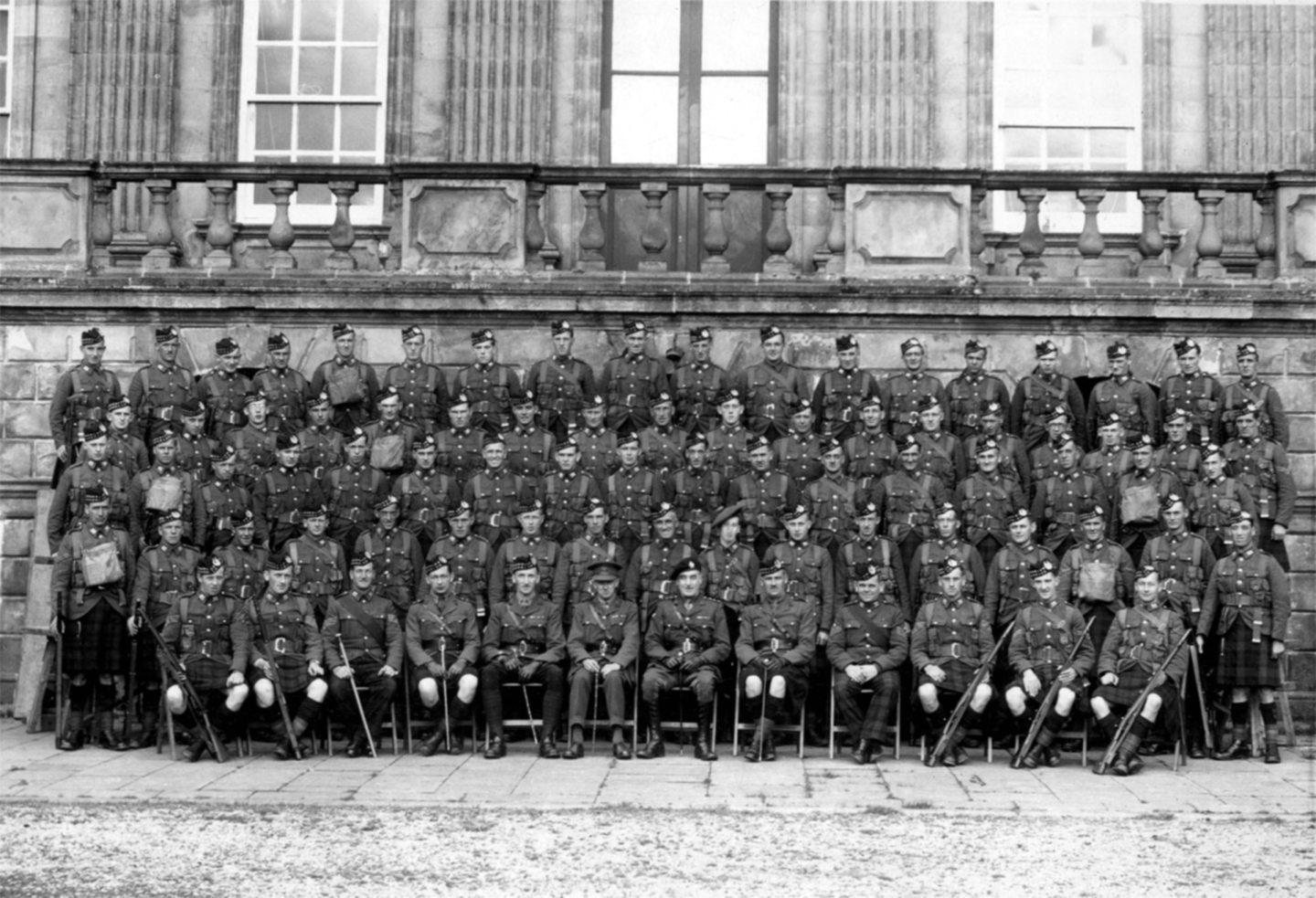
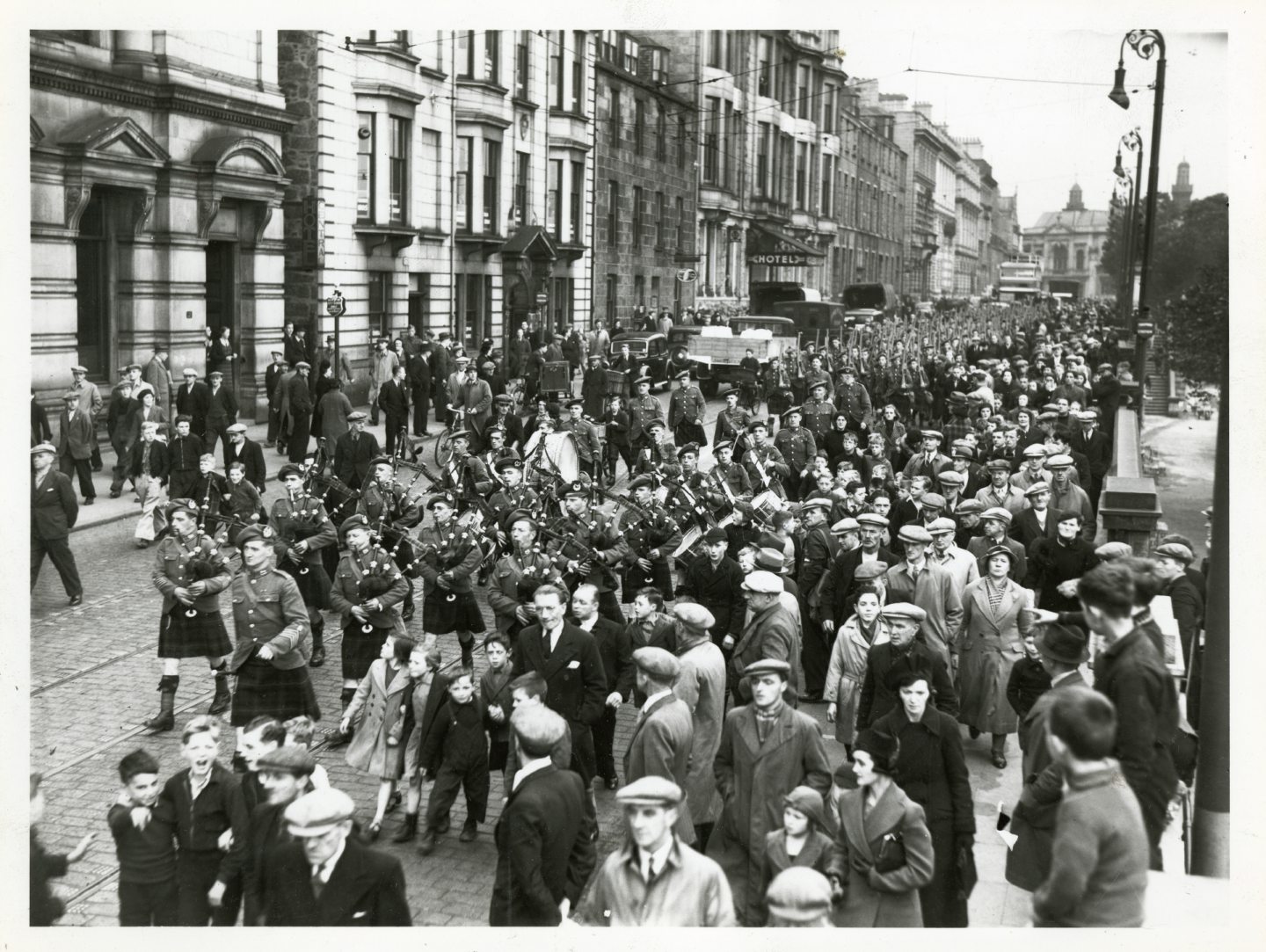
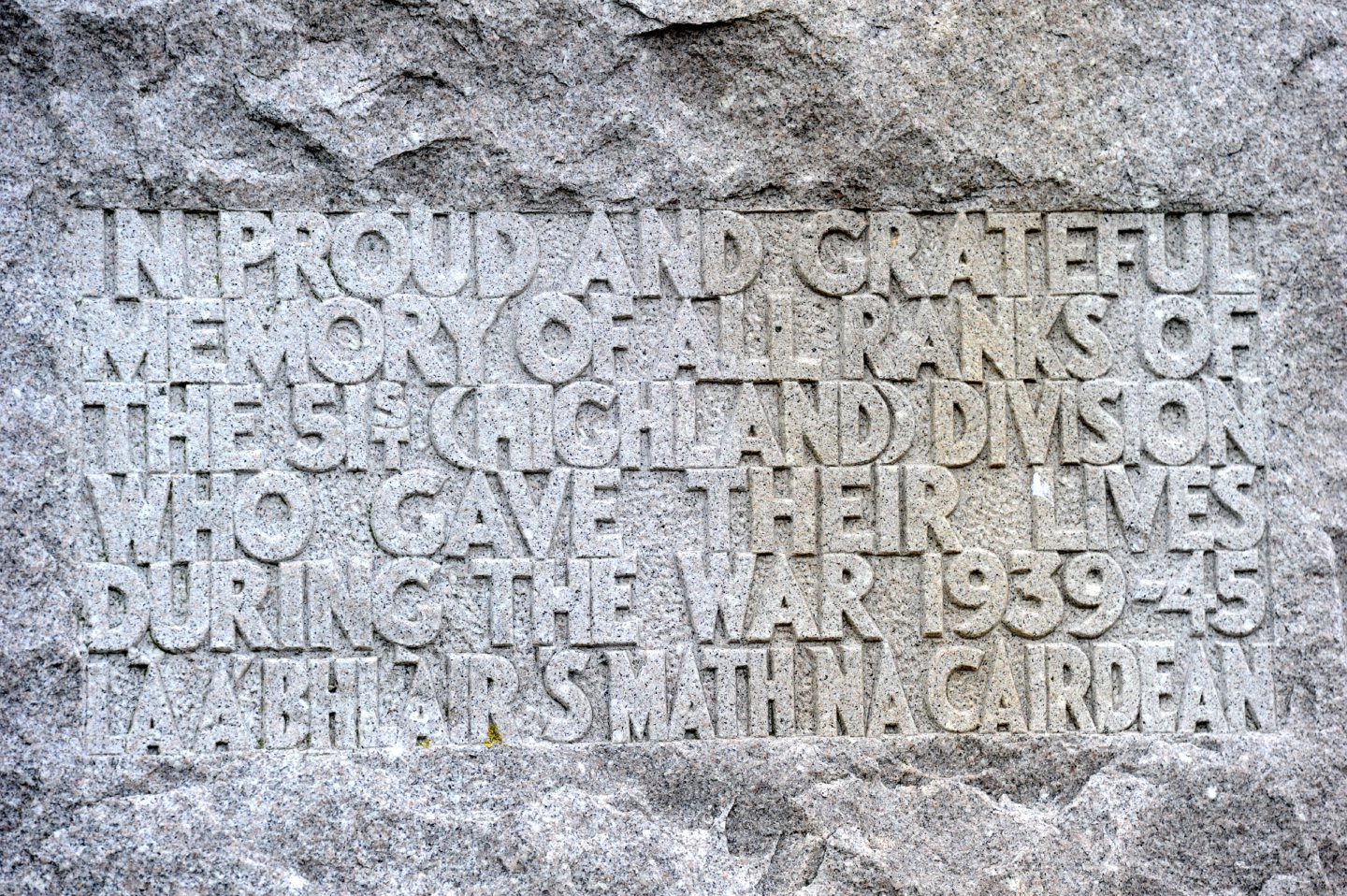
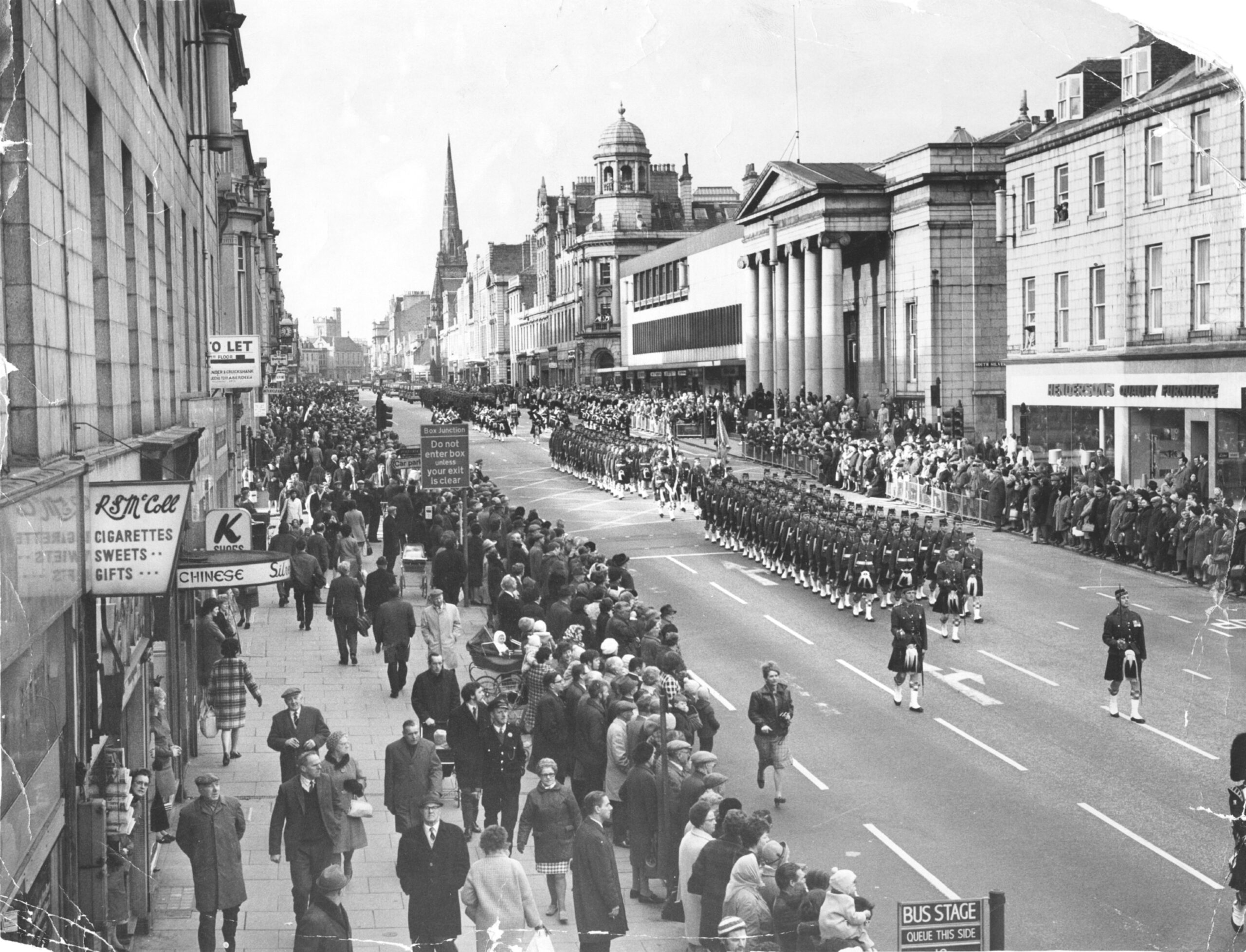
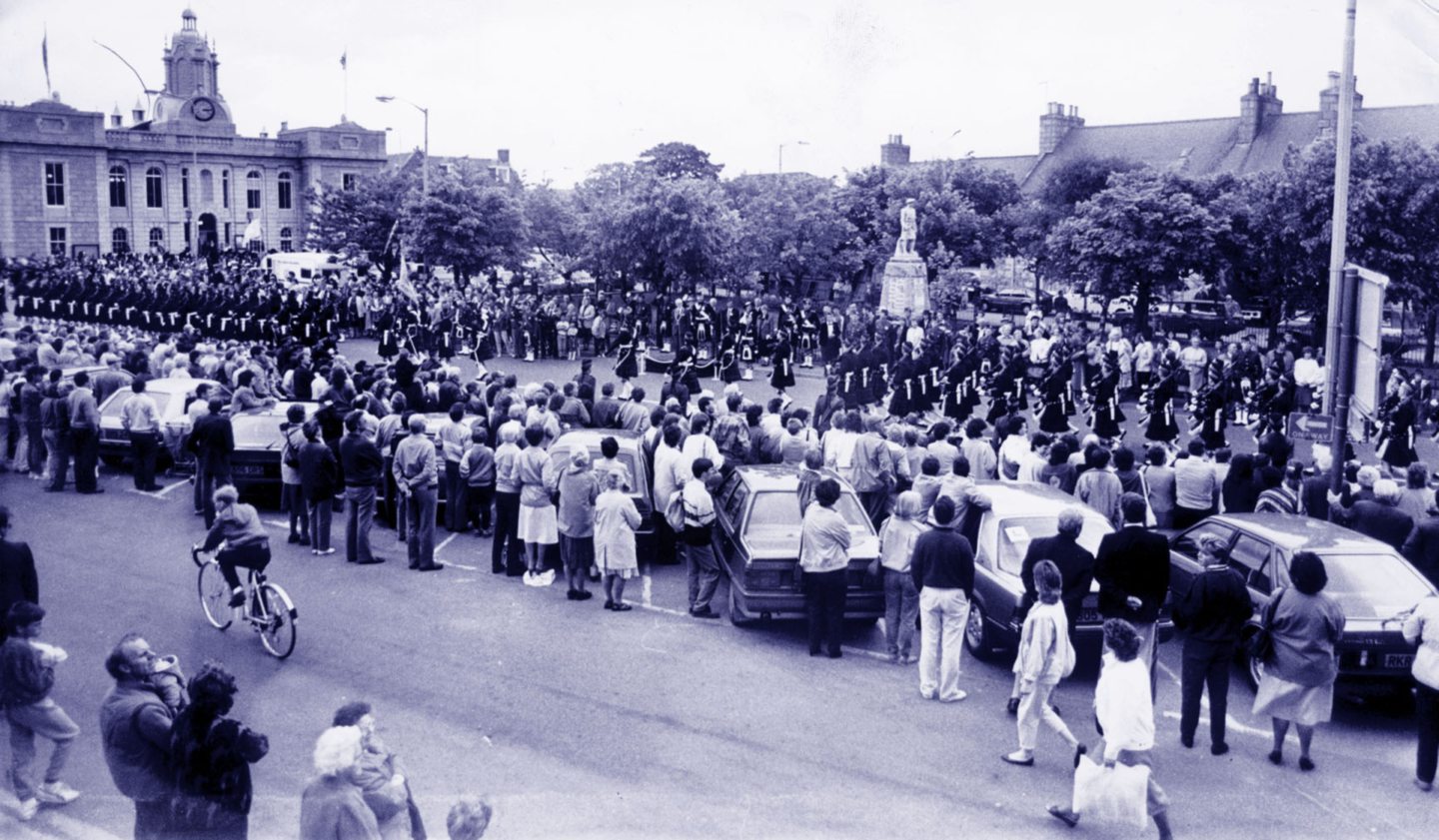
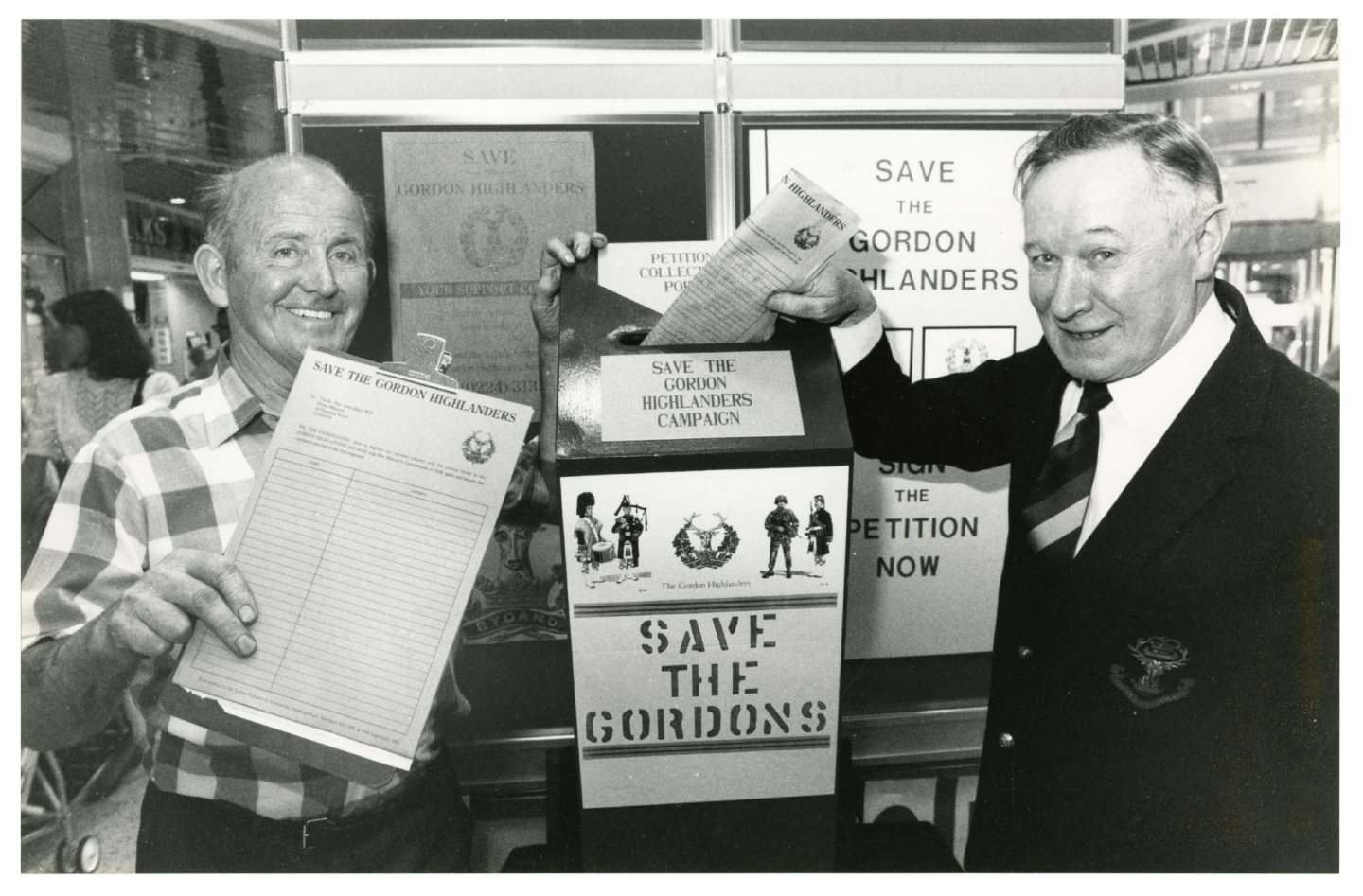
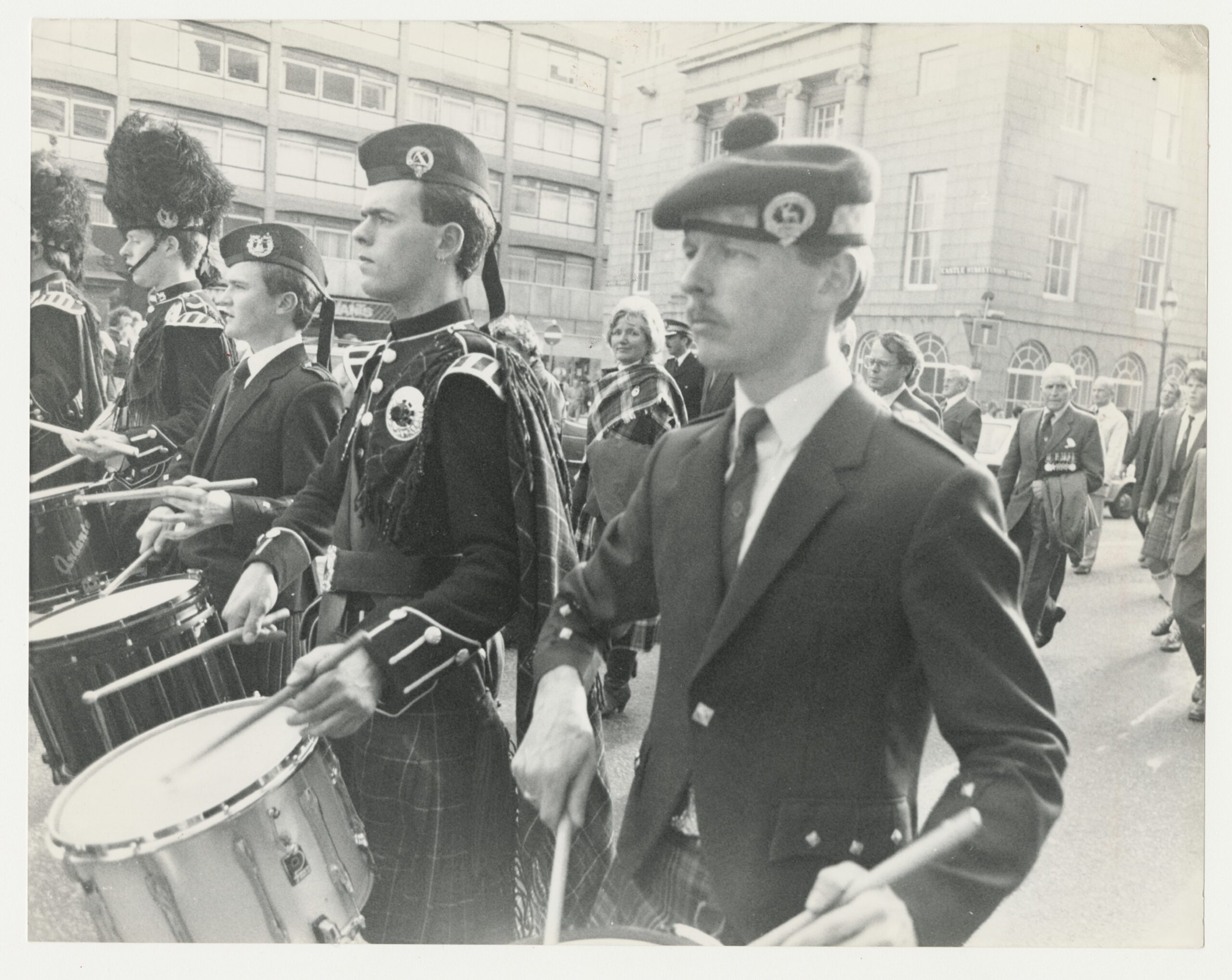
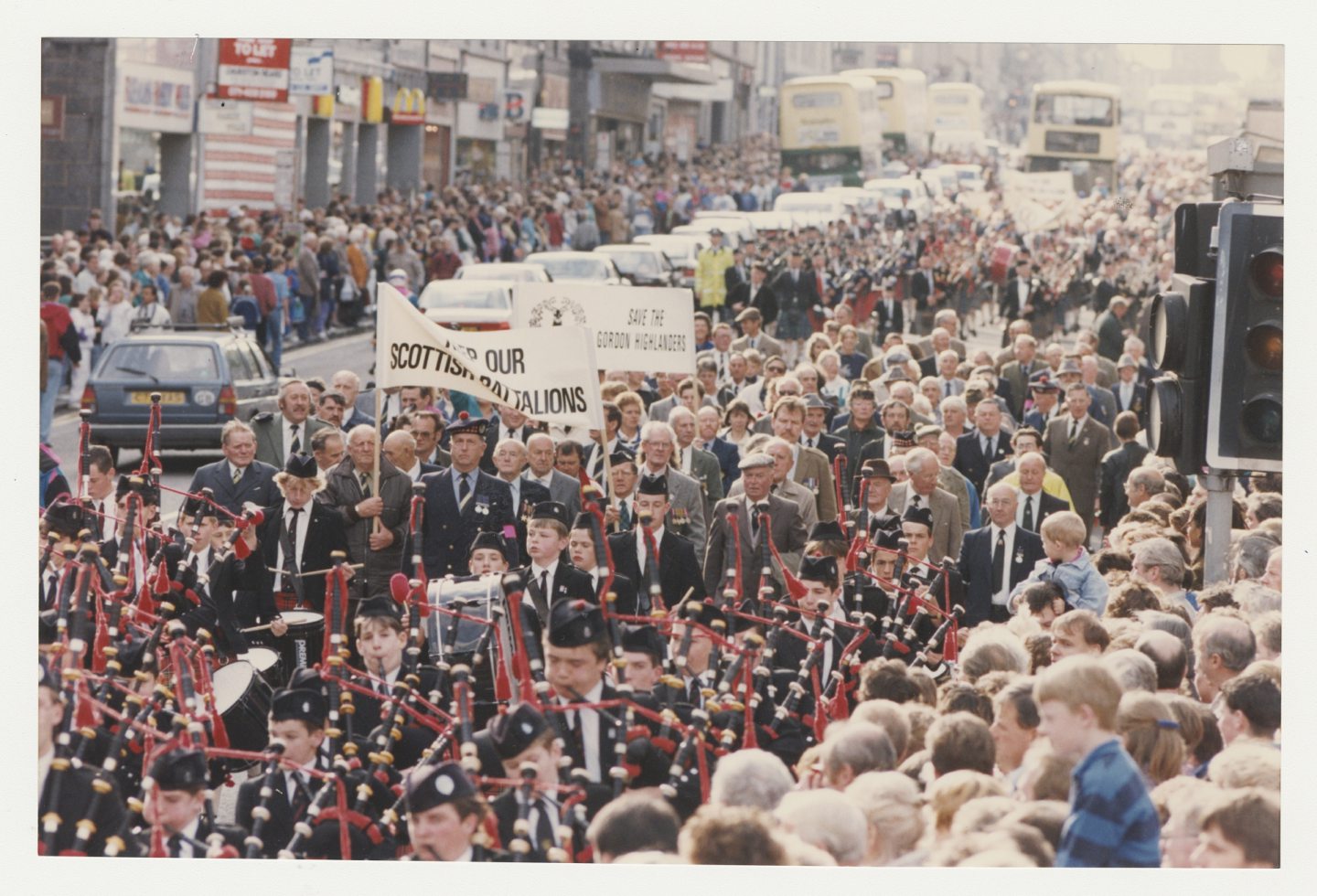
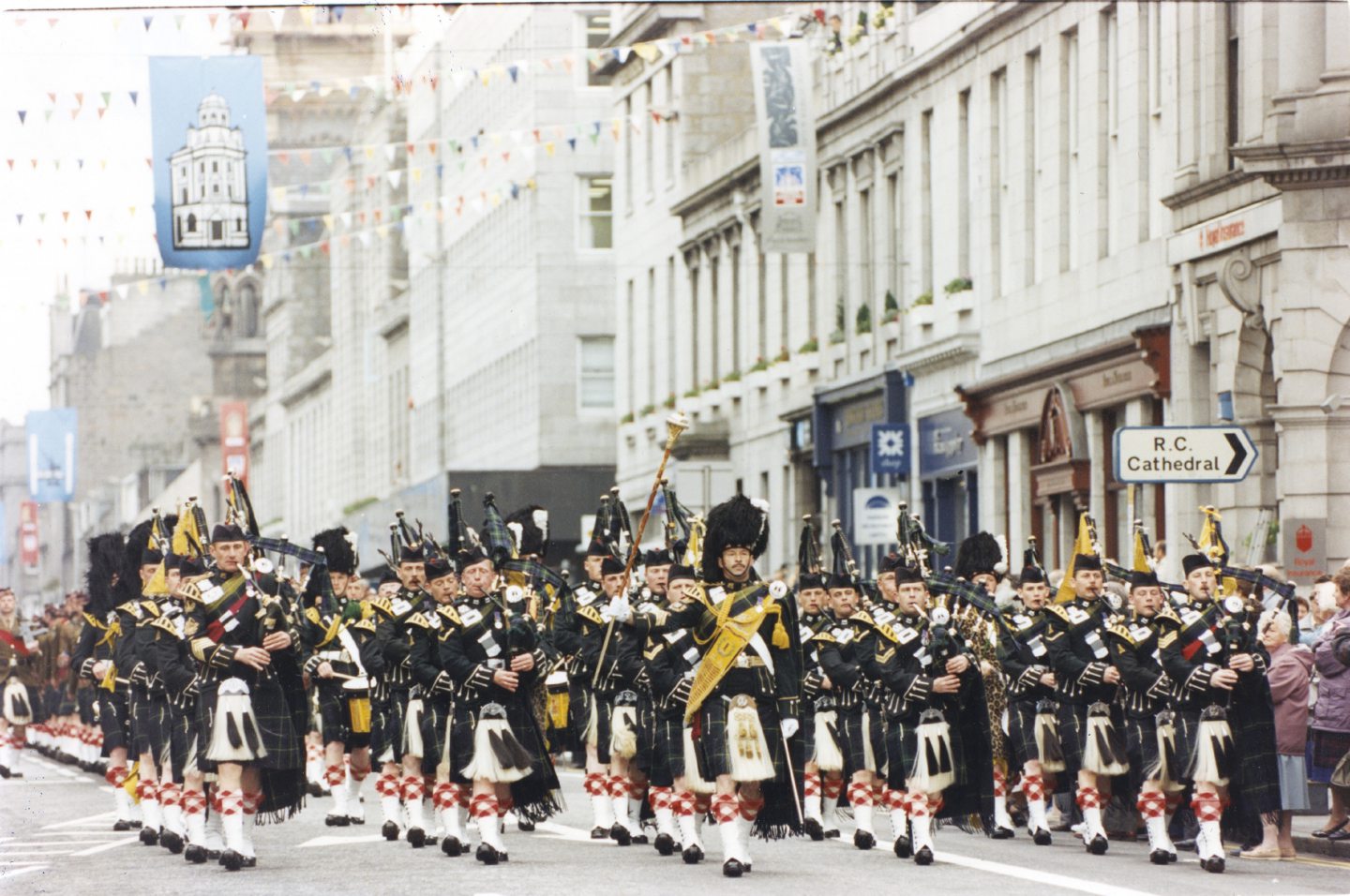
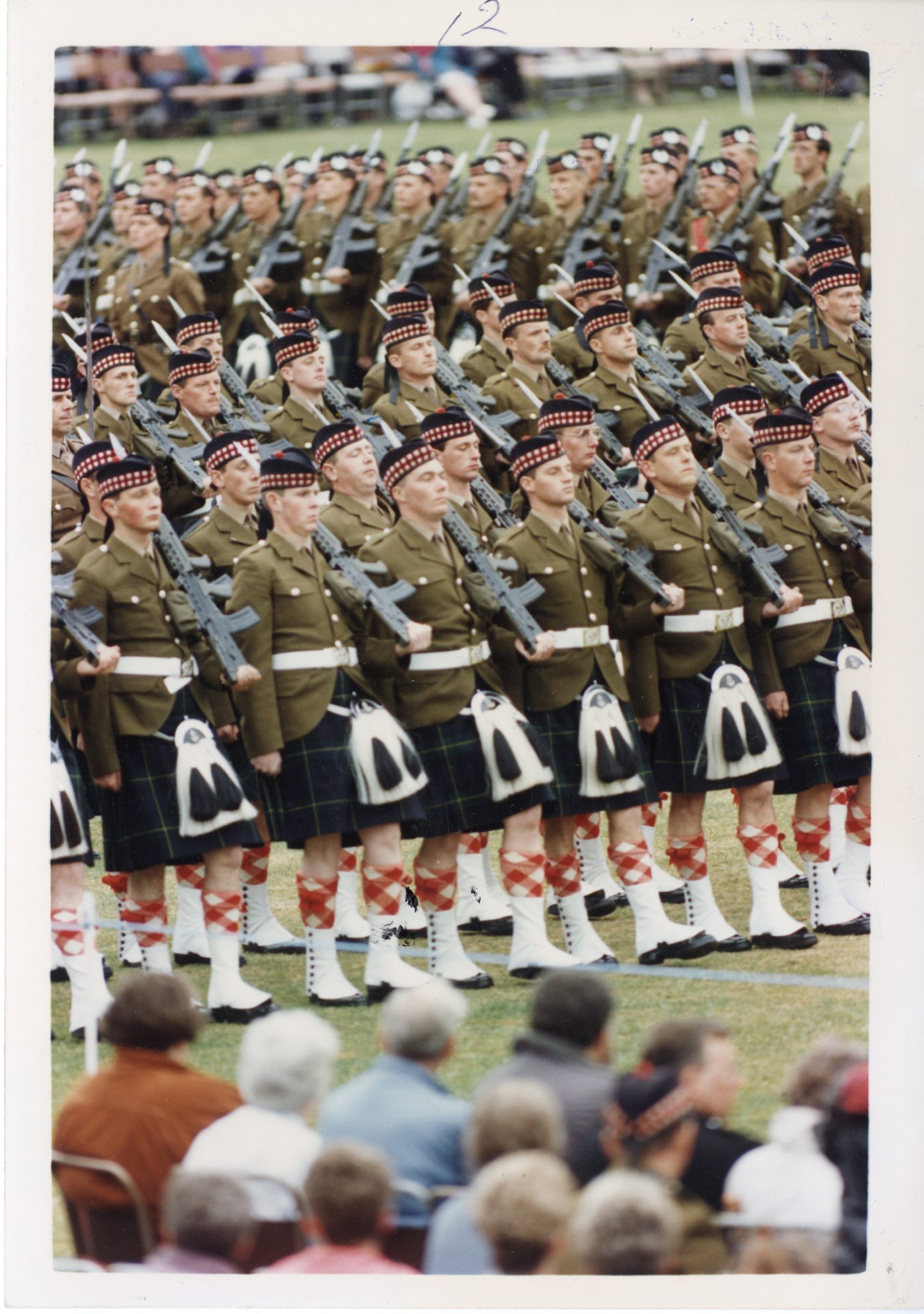
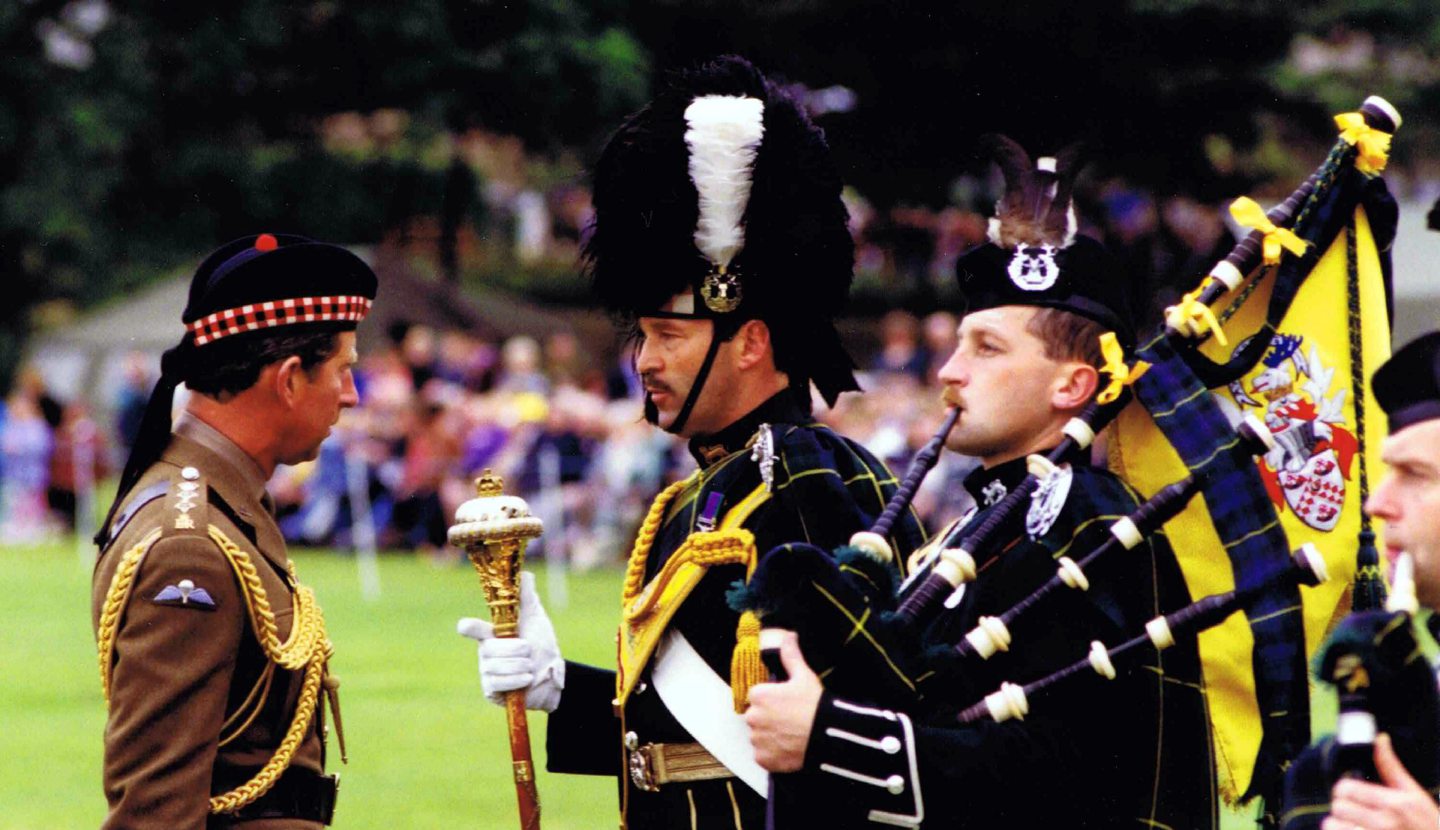
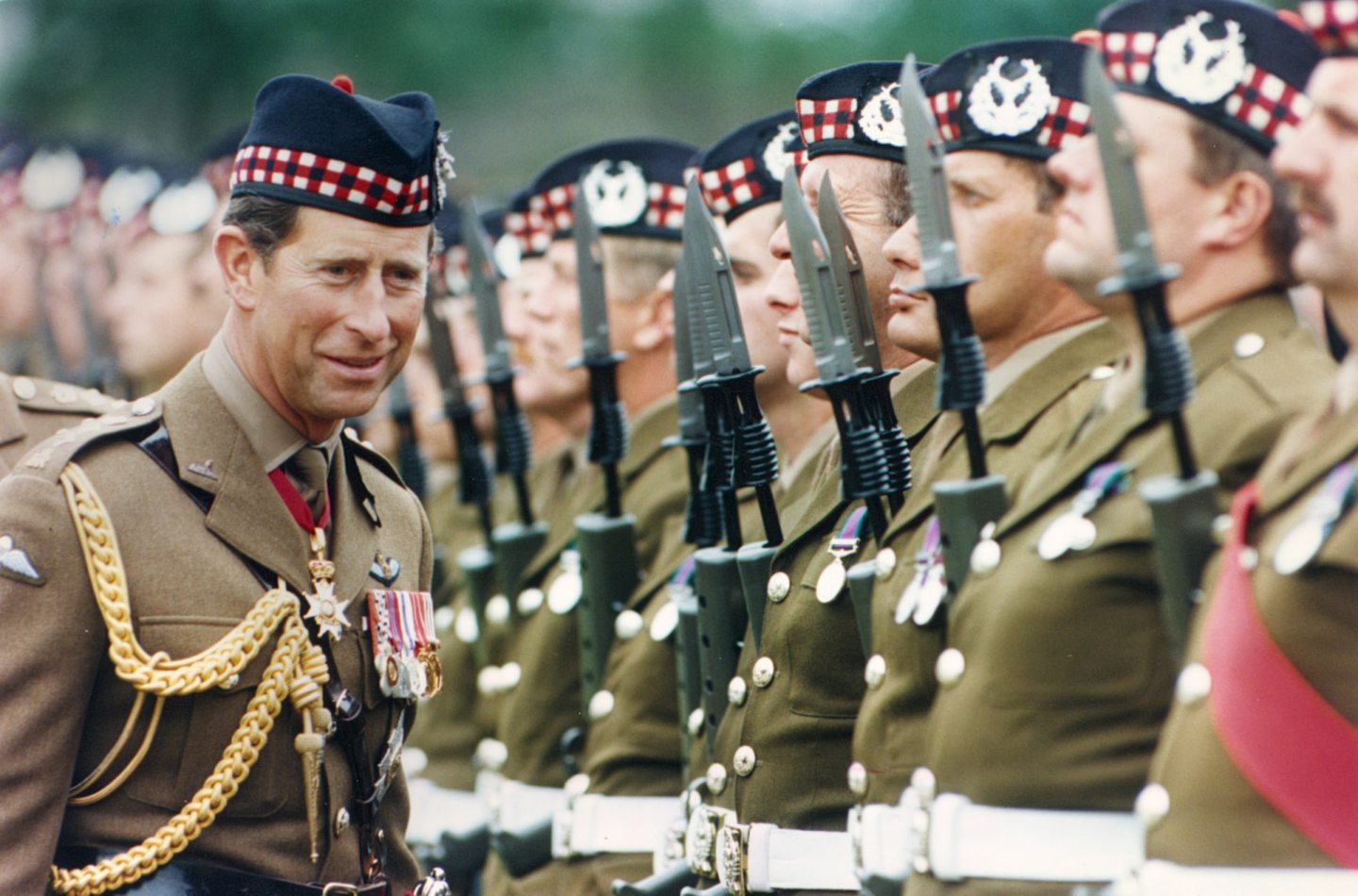
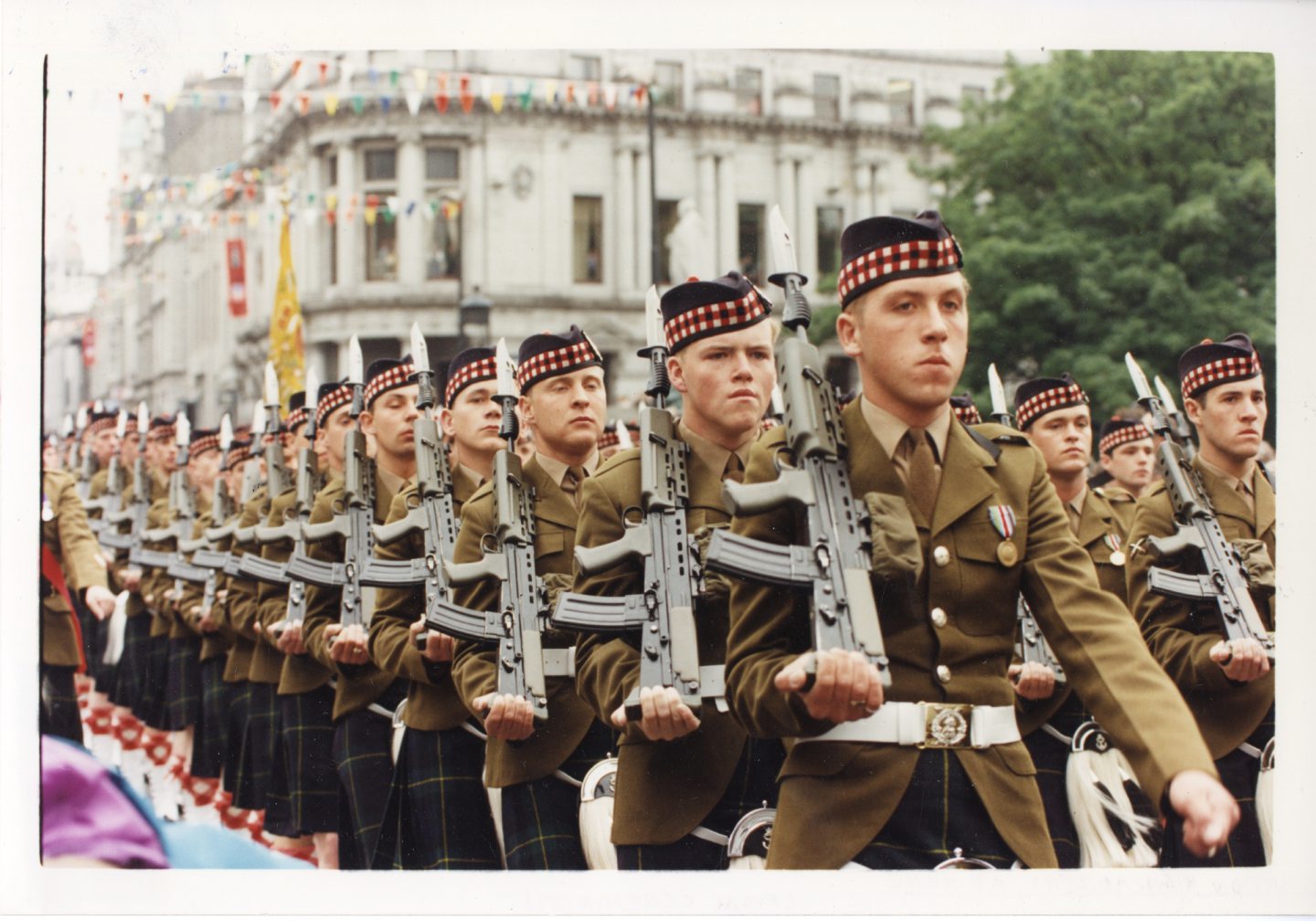
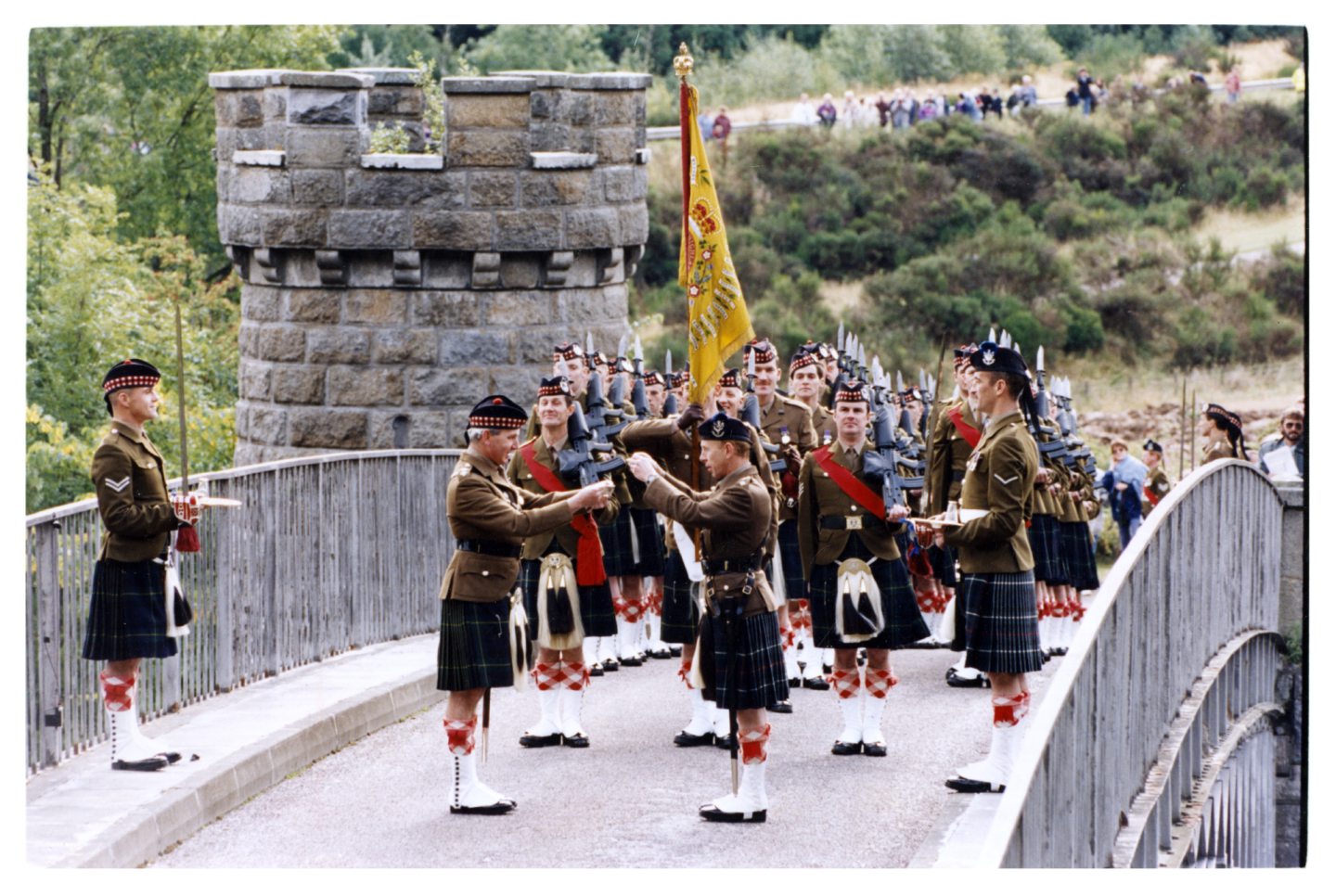
Conversation